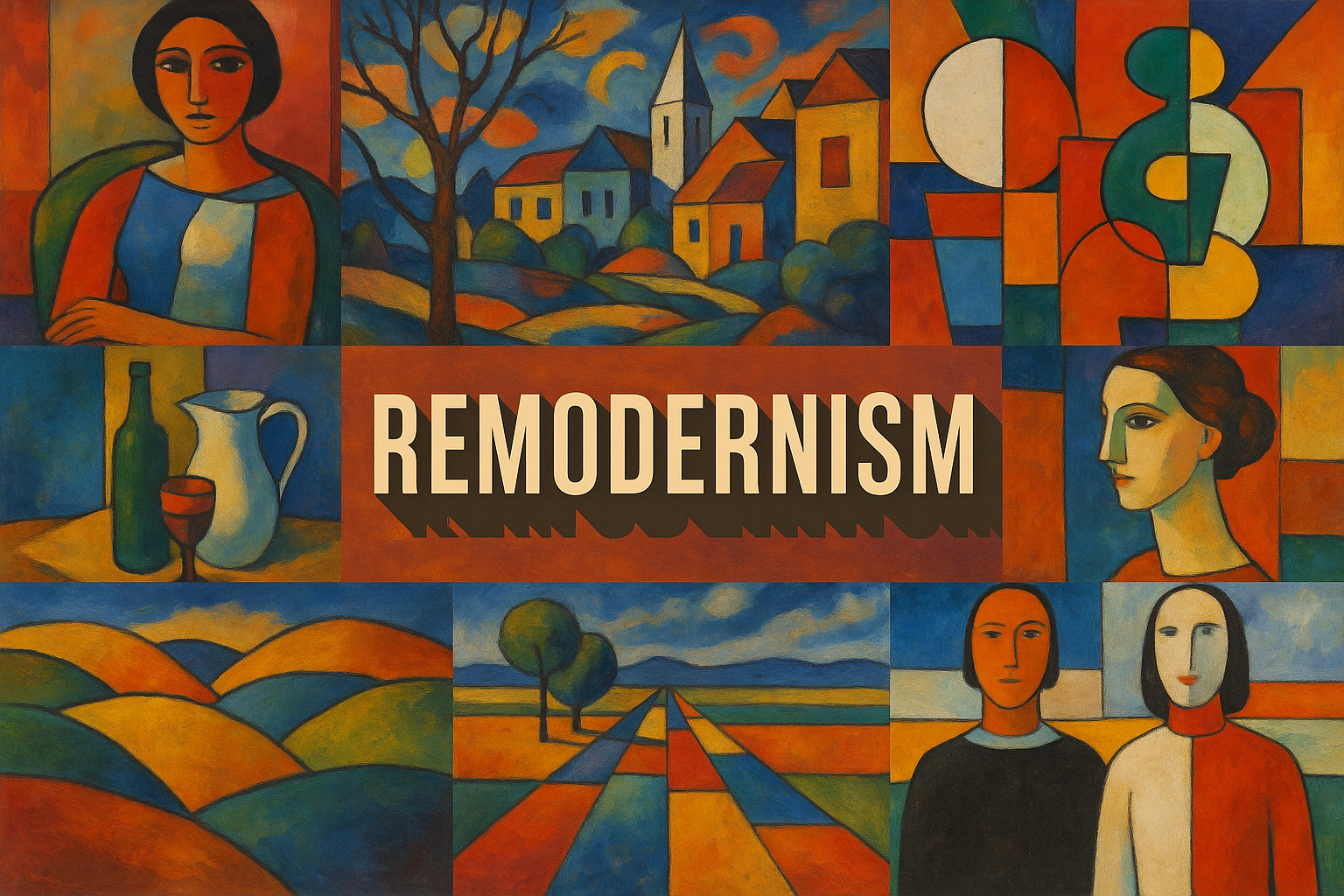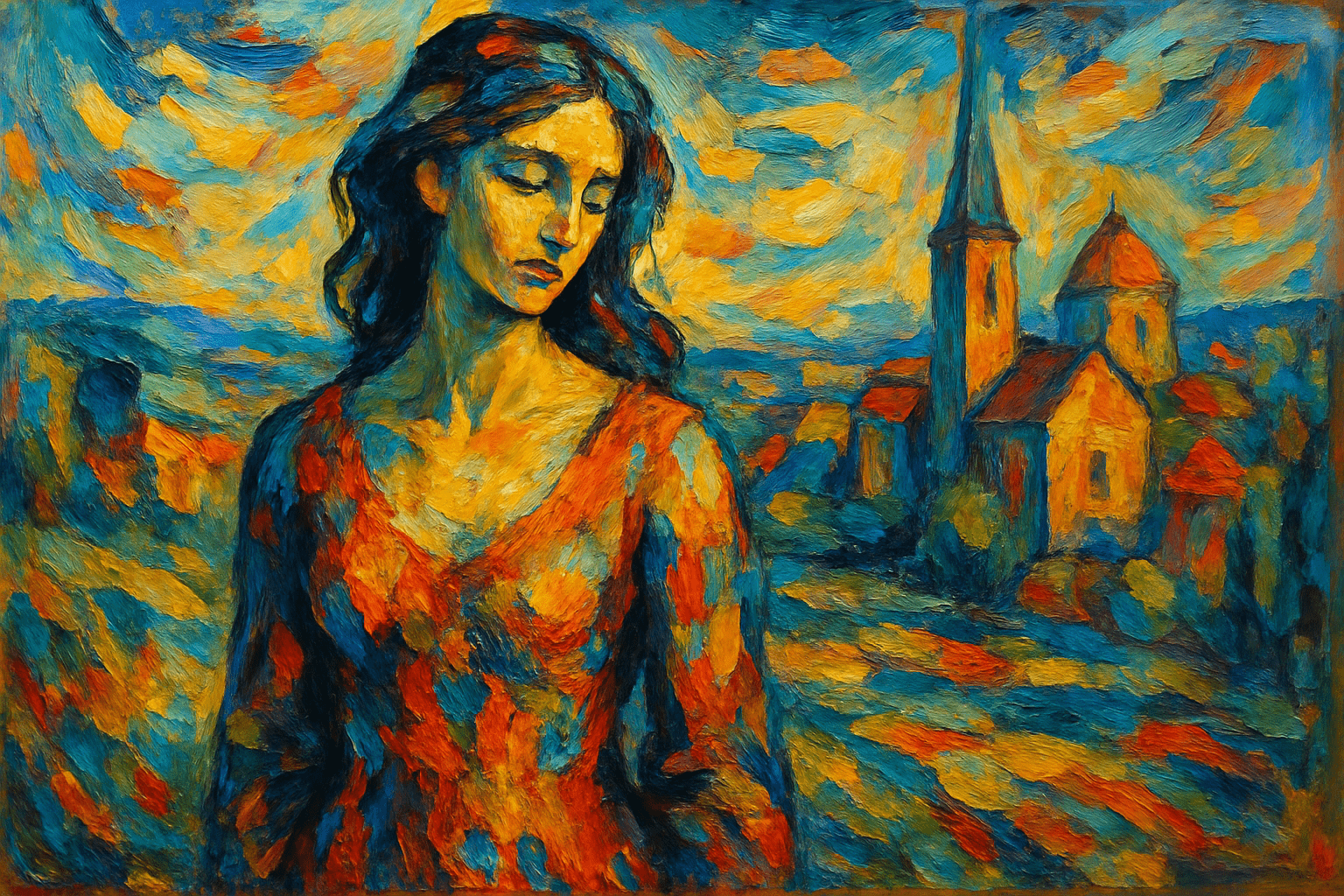
Remodernism
The visual appearance of Remodernism is characterized by its rejection of the traditional art styles that came before it. Remodernist artists instead embrace a more experimental and individualistic approach to their work. This can manifest in a variety of ways, but often includes the use of unconventional materials and techniques. As a result, the visual appearance of Remodernist art is often unique and highly individualized.
AOI thinking about Remodernism [+_~]-/
Overview and Quickfacts
Remodernism is an art movement that emerged in the early 21st century. It is characterized by a return to traditional values and techniques in art, while also incorporating modernist and postmodernist ideas. Remodernism has been described as a reaction against the perceived excesses of the postmodern art movement. It is also a response to the growing commercialization and commodification of the art world. The Remodernist movement is still in its early stages, but it has already begun to have a significant impact on the art world. A number of prominent artists have embraced the Remodernist aesthetic, and the movement has inspired a new wave of creativity and experimentation.
Can understand it also, as:
Renewal, rebirth, revival, reformation, innovation
Categorize it as:
Impressionism, Modernism
.: Dreaming :.
holds a HAIKU for the art style
:. Thought is power .:
Detailed Description
Remodernism is an art movement that started in the late 1990s in response to the perceived limitations of postmodernism. Remodernism advocates a return to the ideas and techniques of modernism, while incorporating elements of postmodernism. Famous artists associated with remodernism include Thomas Kinkade, who was known for his highly-detailed and saccharine paintings of idyllic American scenes, and Peter Doig, who is known for his ethereal and dreamlike paintings. One of the most famous remodernist paintings is Kinkade’s “The Garden of Prayer,” which features a group of people praying in a sun-dappled garden. Doig’s “The White Canoe” is another well-known remodernist painting; it features a young boy in a canoe, surrounded by a misty and ethereal landscape.
.. beep, beep, beep ..
<START OF TRANSMISSION>
1. Remodernism is a movement in the arts that began in the late 1990s. 2. It is characterized by a return to traditional values and techniques, and a rejection of the postmodernist values of irony and deconstruction. 3. Remodernist artists seek to reconnect with the spiritual and emotional aspects of art, and to create work that is honest and direct. 4. They believe that art should be accessible to everyone, and that it should be expressive and emotional. 5. Remodernist artists often use traditional media such as painting and sculpture, but they are also open to new media such as video and installation. 6. Remodernism is not a style or aesthetic, but rather a attitude or approach to art-making. 7. Remodernist artists often work in series or groups, and they frequently collaborate with other artists. 8. Remodernism is an international movement, with artists working in countries all over the world. 9. The term "remodernism" was coined by British artist Billy Childish in 1996. 10. Childish is also the founder of the Stuckism art movement, which is closely related to remodernism. 11. Other important remodernist artists include Tracey Emin, Damien Hirst, and Rachel Whiteread. 12. Remodernism has been influenced by a variety of movements and artists, including Dada, Surrealism, Abstract Expressionism, and Pop Art. 13. Remodernist artists often use found objects and everyday materials in their work. 14. They are interested in exploring the relationship between art and life, and in blurring the lines between art and reality. 15. Remodernist artists often make use of chance and accident in their work, and they are open to experimentation. 16. Remodernism is a reaction against the intellectualism of the postmodern era, and a return to the emotional and spiritual aspects of art. 17. Remodernist artists often use traditional techniques and media, but they are also open to new media and technologies. 18. Remodernism is an international movement, with artists working in countries all over the world. 19. The term "remodernism" was coined by British artist Billy Childish in 1996. 20. Childish is also the founder of the Stuckism art movement, which is closely related to remodernism.
<EOF>
.. robbel bob
Visual Examples from our image gallery
Coming soon, we are so slow .. might never come
Artists, Paintings, and more
(be aware, can be highly speculative)
Artists (be aware, speculation possible):
1. Peter Doig (born 1959) 2. Chris Ofili (born 1968) 3. Tracey Emin (born 1963) 4. Damien Hirst (born 1965) 5. Rachel Whiteread (born 1963) 6. Gilbert & George (born 1943) 7. Sarah Lucas (born 1962) 8. Antony Gormley (born 1950) 9. Richard Long (born 1945) 10. Bruce Nauman (born 1941) 11. Louise Bourgeois (1911-2010) 12. Richard Serra (born 1939) 13. John Baldessari (born 1931) 14. Ed Ruscha (born 1937) 15. Yoko Ono (born 1933) 16. Joseph Beuys (1921-1986) 17. Andy Warhol (1928-1987) 18. Jasper Johns (born 1930) 19. Robert Rauschenberg (1925-2008) 20. Cy Twombly (1928-2011) 21. Eva Hesse (1936-1970) 22. Carl Andre (born 1935) 23. Dan Flavin (1933-1996) 24. Donald Judd (1928-1994) 25. Frank Stella (born 1936) 26. Barnett Newman (1905-1970) 27. Ad Reinhardt (1913-1967) 28. Mark Rothko (1903-1970) 29. Clyfford Still (1904-1980) 30. Jackson Pollock (1912-1956)
Artworks (be aware, speculation possible)
1. “Nude Descending a Staircase, No. 2” by Marcel Duchamp, 1912 2. “Fountain” by Marcel Duchamp, 1917 3. “L.H.O.O.Q.” by Marcel Duchamp, 1919 4. “The Bride Stripped Bare by Her Bachelors, Even” by Marcel Duchamp, 1915-23 5. “Portrait of an Artist (Pool with Two Figures)” by David Hockney, 1972 6. “Mr. and Mrs. Clark and Percy” by David Hockney, 1971-72 7. “A Bigger Splash” by David Hockney, 1967 8. “The Splash” by David Hockney, 1966 9. “Hollywood Hills with Pool” by David Hockney, 1964-65 10. ” Mulholland Drive: The Road to the Studio” by David Hockney, 1980 11. “Portrait of an Artist (Pool with Two Figures)” by David Hockney, 1972 12. “The Great Wall of China, 1st Version” by Robert Rauschenberg, 1964 13. “The Great Wall of China, 2nd Version” by Robert Rauschenberg, 1965 14. “Canyon” by Robert Rauschenberg, 1959 15. “Untitled” by Jackson Pollock, 1952 16. “Number 1A” by Jackson Pollock, 1948 17. “Number 31” by Jackson Pollock, 1950 18. “Number 32” by Jackson Pollock, 1950 19. “One” by Clyfford Still, 1957 20. “1957-D No. 2” by Clyfford Still, 1957 21. “1957-G No. 2” by Clyfford Still, 1957 22. “1957-J No. 2” by Clyfford Still, 1957 23. “1957-N No. 2” by Clyfford Still, 1957 24. “1957-A No. 1” by Clyfford Still, 1957 25. “1957-C No. 1” by Clyfford Still, 1957 26. “1957-E No. 1” by Clyfford Still, 1957 27. “1957-F No. 1” by Clyfford Still, 1957 28. “1957-H No. 1” by Clyfford Still, 1957 29. “1957-I No. 1” by Clyfford Still, 1957 30. “1957-K No. 1” by Clyfford Still, 1957
Epoch
The time period of the art style Remodernism is from the late 20th century to the present day.
AI ART RESSOURCES (AKA, well Tools)
Helping tools -> predefined search links on other pages:











